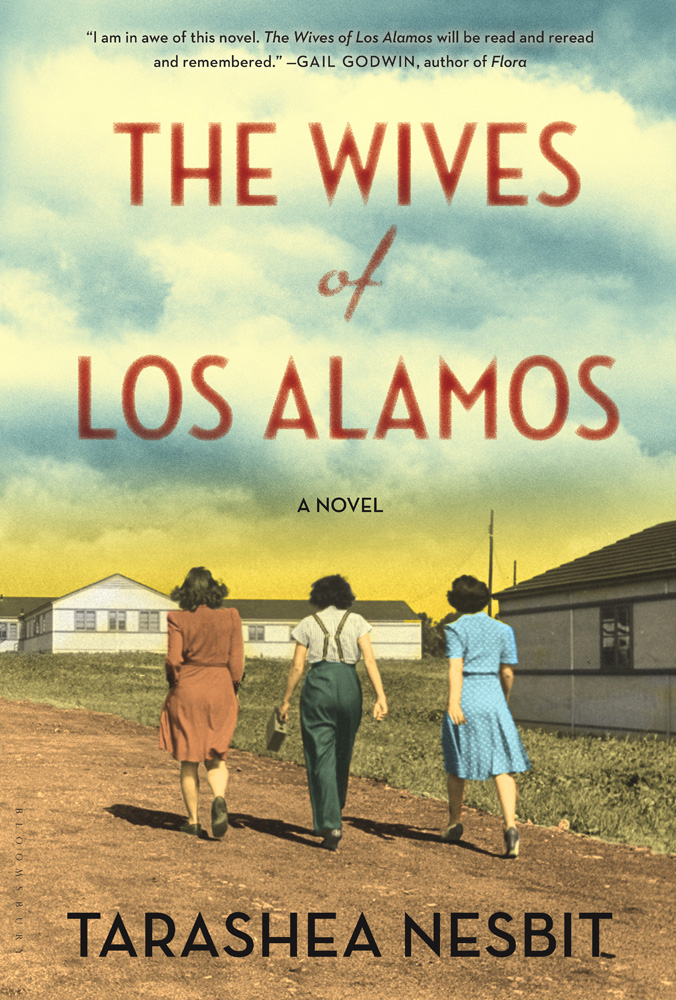
The Wives of Los Alamos
کتاب های مرتبط
- اطلاعات
- نقد و بررسی
- دیدگاه کاربران
نقد و بررسی

Starred review from October 14, 2013
First-time novelist Nesbit chronicles the lives of a disparate group of women who forge a new community together after relocating to the desert of New Mexico during World War II. The collective “we” that serves as the book’s protagonist only knows that the women’s physicist husbands are working day and night on a secret government project. This clandestineness permeates their world as their letters are censored, visits home are limited, and close family and friends are forbidden to know their exact whereabouts. In the meantime, the wives carry on (or attempt to carry on) with their normal everyday lives—gossiping about one another, setting standards for practical fashion among the group, and trying to get around the bureaucracy that has them feeding their families with spoiled provisions. On occasion, the mundane turns ominous, as explosions are heard in the distance. Nesbit’s novel is divided into concise sections that report on different aspects of life in Los Alamos. The author’s writing—by turns touching, confiding, and matter-of-fact—perfectly captures the commonalities of the hive mind while also emphasizing the little things that make each wife dissimilar from the pack. This effect intensifies once the nature of the Los Alamos project is revealed and the men and their families grapple with the burden of their new creation. Engrossing, dense, and believable.

Starred review from February 1, 2014
The scientists' wives tell the story of daily life in Los Alamos during the creation of the atomic bomb, in Nesbit's lyrical, captivating historical debut. There is no one single narrator. Rather, readers follow a collective "we" as they are uprooted from their varied lives in 1943 to follow their husbands to a makeshift city 7,200 feet above sea level in windswept, barren New Mexico. (Nesbit's unusual style is reminiscent of Julie Otsuka's The Buddha in the Attic, about another set of women living behind barbed wire in World War II America--Japanese-American women before and during their internment.) The wives arrive in Los Alamos as individuals, with relationships and beliefs that Nesbit captures alongside their growing, shared realization that they are no longer in charge of their own futures--and, in the case of foreigners, even their own names (the Fermis become the Farmers). While the husbands and a few women scientists spend the bulk of their time in the "Tech Area," the wives, many highly educated with abandoned careers, cope with their new domestic realities: badly built identical houses, water shortages, limited schooling, boredom, gossip. But they also ride horses and collect pottery. And the husbands must be somewhat attentive since pregnancy is rampant. Uncomfortable social realities become exposed, as well as racism and snobbery toward the local Native Americans and the nonscientist workers. The wives also become distrustful of the members of the Women's Army Corps stationed at Los Alamos. By 1944, this cauldron of manic energy bubbles over in bouts of drinking and partying. There are rumors of musical beds. The women are all half in love with "The Director" (Robert Oppenheimer). But, by 1945, the mood darkens. An ominous secrecy heightens until the bomb is finally dropped. Individual women--like tough Louise, weepy Margaret, charismatic Starla and difficult Katherine--are less characters to follow than touchstones to keep the reader grounded as time passes in this insular world. Nesbit artfully accumulates the tiny facts of an important historical moment, creating an emotional tapestry of time and place.
COPYRIGHT(2014) Kirkus Reviews, ALL RIGHTS RESERVED.

October 15, 2013
In this historical novel, the wives who accompany their husbands to Los Alamos, NM, in 1943 know only that the scientists are working on a very important war project. Nesbit uses a collective "we" to narrate her story, allowing her to explore contradictory points of view among the women. Novelist Julie Otsuka used this literary device with dramatic effect in The Buddha in the Attic, and readers may find echoes of her distinctive style here. The Los Alamos wives are at first mainly concerned with adapting to this strange and claustrophobic little community in the high desert while they long for their old lives. In August 1945, when the women finally find out what the new weapon is and what it has done, they cheer or they shudder. They feel proud, ashamed, confused, or just relieved that the war is finally over and they can go home. VERDICT This well-researched and fast-paced novel gives a panoramic view of the lives of ordinary women whose husbands worked on the atomic bomb during World War II. Recommended both for its important subject matter and for the author's vivid storytelling.--Leslie Patterson, Rehoboth, MA
Copyright 2013 Library Journal, LLC Used with permission.

























دیدگاه کاربران